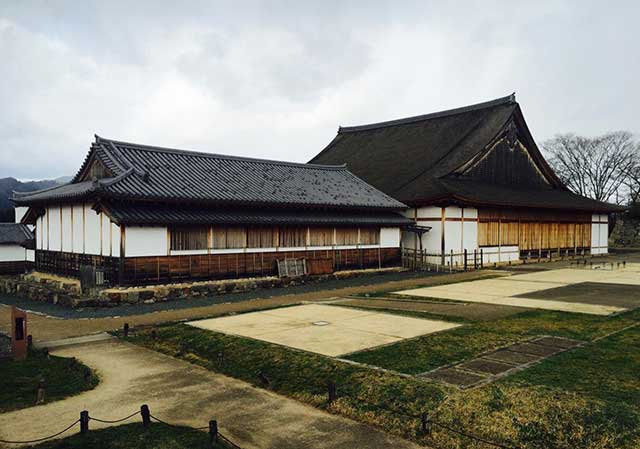
Tamba Sasayama Castle, also known as Sasayama or Kirigajo (Mist Castle), is a flatland castle (hira-jiro) situated on a gentle rise in the Tamba region of Hyogo Prefecture. It was constructed in 1608 as part of Tokugawa Ieyasu's strategy to prepare for an attack on Osaka, aiming to bring an end to the Toyotomi clan. Ieyasu ordered the castle's construction using the Tenka Bushin system, engaging 20 former enemy daimyo and their forces to complete the complex within six months. This system kept the former enemies close and preoccupied, financially straining them and limiting their capacity for further conflict. The stones used in Sasayama Castle feature engravings called kokumon, indicating who made each part of the walls and preventing theft by other lords' men.
The castle's design was crafted by Todo Takatora, a renowned castle architect, and construction was overseen by Ikeda Terumasa. The castle's wide moats and impressive ishigaki stone walls, along with its well-planned layout, are notable features. The three main gates are strategically positioned, and remnants of the Umadashi, special defensive ramparts outside the main gates, can still be seen. Although the castle has a tenshu-dai, or tower keep base, a keep was never constructed. One theory suggests that Ieyasu, fearing the castle's formidable design could be used against him, decided against building the keep. In reality, the plans were abandoned due to Ieyasu's urgency to start constructing Nagoya Castle. Similarly, the keep at Iga Ueno, another Todo Takatora design, was destroyed by a typhoon during construction, and Ieyasu, eager to eliminate the Toyotomi threat, canceled its rebuilding.

Most of Sasayama Castle was destroyed around 1871 at the end of the feudal period. However, the Dai O-shoin, the main palace building, remained intact until it was gutted by US aerial fire-bombing in 1944. The O-shoin was reconstructed in 2000, based on old photographs and the architecture of Nijo Palace in Kyoto, which itself was modeled after Nagoya Castle’s Honmaru Goten Palace. Interestingly, after completing Sasayama Castle, Ieyasu immediately ordered the same 20 daimyo to begin work on the larger, grander Nagoya Castle.
Parts of the original castle town still exist, and several traditional samurai houses have been preserved by the local government. Sasayama Castle is a fascinating site to explore, with ongoing preservation projects aimed at safeguarding the castle and its surrounding historical areas.
See also
-
Kokura Castle
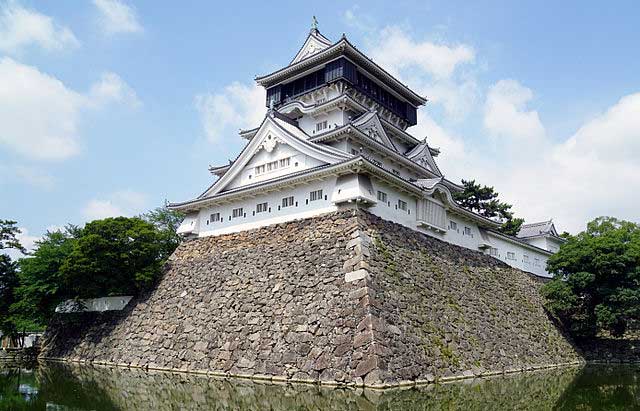
Kokura Castle is traditionally considered to have been founded by Hosokawa Tadaoki (1563–1645), although by the time the Hosokawa clan came to control these lands, the fortification had already existed since at least 1569 and was most likely built by members of the Mori clan.
-
Ikeda Castle

In 1334, Ikeda Noriyoshi built a small fort on this site, which over time was repeatedly expanded and rebuilt. During the Ōnin War of 1467–1477, the Ikeda clan supported the Western Coalition. As a result, Ikeda Castle was attacked and captured by the forces of the Eastern Coalition, but it was soon recaptured, allowing it to avoid serious destruction.
-
Aizu-Wakamatsu Castle
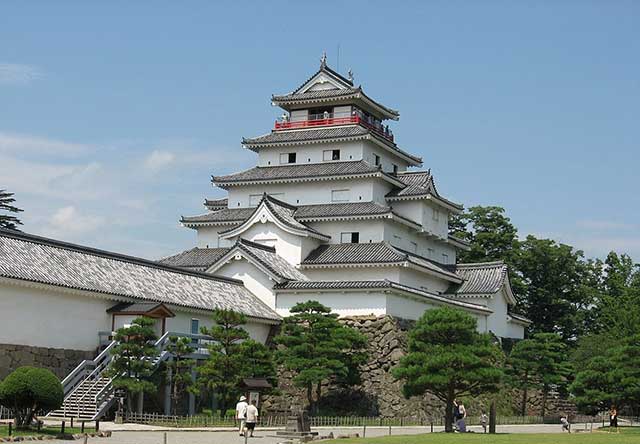
Aizu-Wakamatsu is the most powerful and at the same time the oldest castle in the Tōhoku region in the north of Honshu Island. Its history begins in the 14th century and is closely connected with the Ashina clan, whose members claimed descent from the legendary Taira family.
-
Maruoka Castle
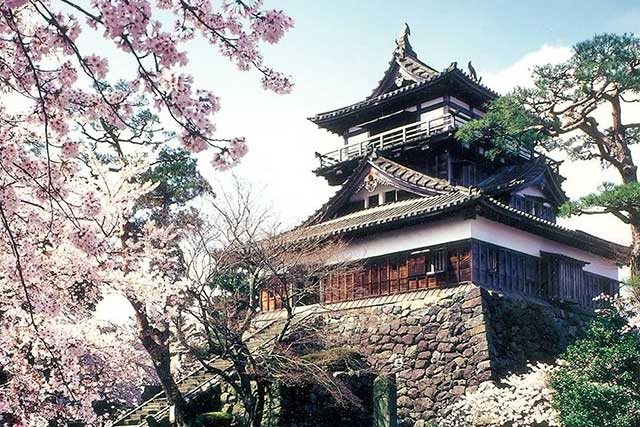
Maruoka Castle is located in the central part of the former city of Maruoka, which is now part of the city of Sakai. This area lies in the northeastern part of Fukui Prefecture. The castle was built on the bank of the Kuzuryu River, on the side opposite Fukui City, which once served as the administrative center of the former Echizen Province. Thanks to its location, Maruoka held significant strategic importance, as it controlled two major routes at once: the Hokurikudo highway leading from Kaga Province and the Mino Kaido road connecting these lands with Mino Province.
-
Marugame Castle
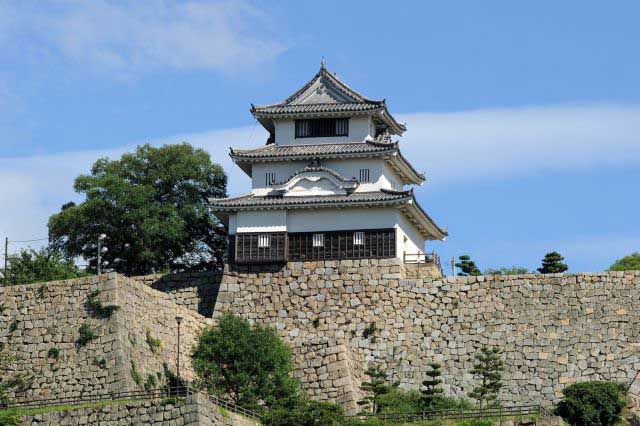
Marugame is part of the so-called “Authentic Dozen,” a group of twelve castles whose donjons have survived to the present day without major reconstructions since the Edo period.
-
Iyo Matsuyama Castle
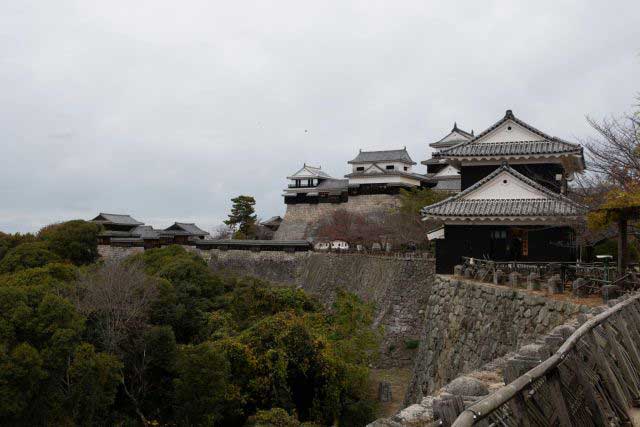
Historically, the center of Iyo Province—corresponding to today’s Ehime Prefecture on the island of Shikoku—was the city of Imabari, while the Matsuyama area was regarded as an agricultural hinterland with broad plains and low hills. During the Muromachi period, the central part of the province was governed by the Kano clan from Yuzuki Castle. With the onset of the Sengoku period, however, this clan lost its former influence and was forced to survive in the shadow of the more powerful Mori and Chōsokabe clans. After Toyotomi Hideyoshi’s forces conquered Shikoku in 1587, the northern part of Iyo Province was granted to Fukushima Masanori, one of the so-called “Seven Spears of Shizugatake.” In 1595, Masanori was transferred to Kiyosu Castle, and the lands around Matsuyama were given to another of the Seven Spears, Katō Yoshiaki, who received Masaki Castle and an income of 60,000 koku of rice.
-
Kanazawa Castle
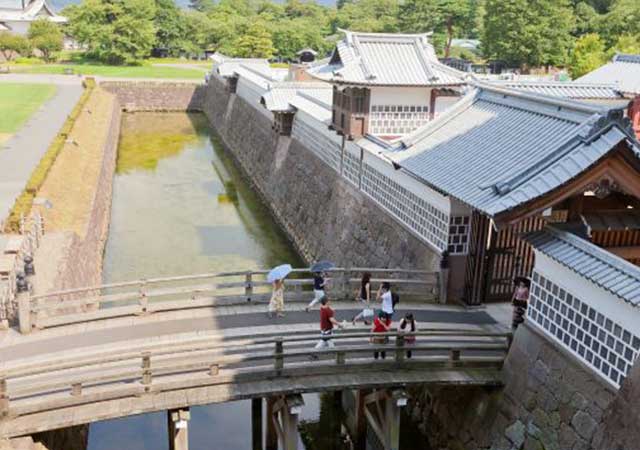
Construction of Kanazawa Castle began in 1580 on the orders of Sakuma Morimasa, a vassal of Oda Nobunaga. The castle was built on the site of the Ikko-ikki sect's Oyama Gobo temple, which is why it is sometimes called Oyama Castle. Morimasa managed to build several moats and begin construction of a castle town. However, after his defeat at the Battle of Shizugatake in 1583, he was executed, and ownership of the castle passed to Maeda Toshiie (1538–1599).
-
Nakatsu Castle
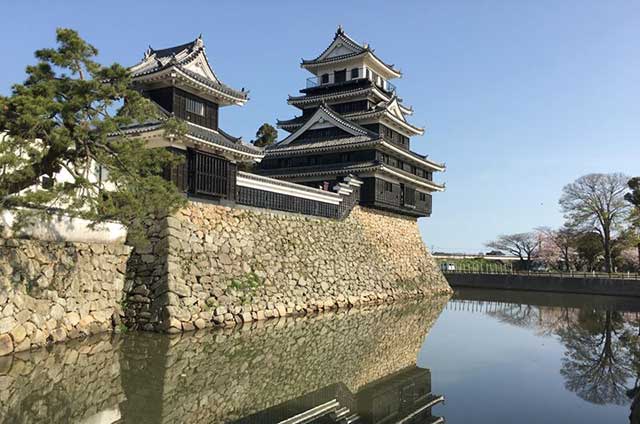
Kuroda Yoshitaka (1546–1604) was one of the closest advisors to the legendary military commander Toyotomi Hideyoshi. He took part in key military campaigns of the late 16th century, including the campaign against Shikoku in 1585 and the campaign against Kyushu in 1587. Later, during the second campaign in Korea, Yoshitaka served as chief advisor to the commander of the invasion forces, Kobayakawa Hideaki. After Hideyoshi's death, he swore allegiance to Tokugawa Ieyasu, thereby securing his influence and patronage under Japan's new leader.

